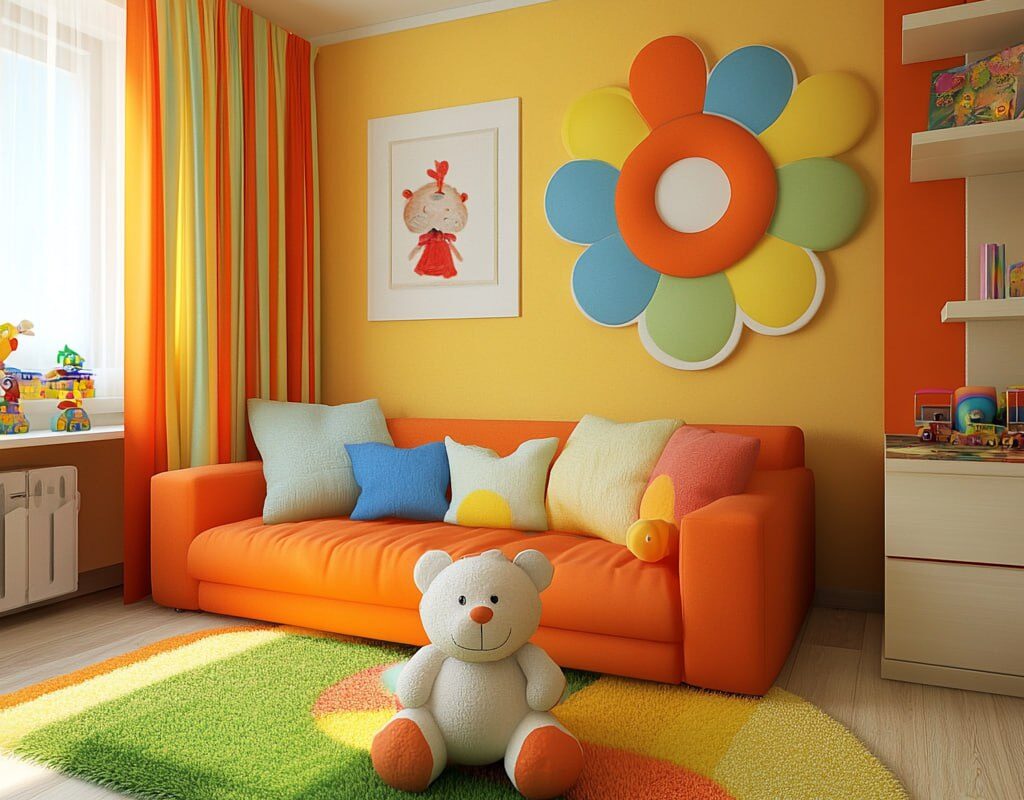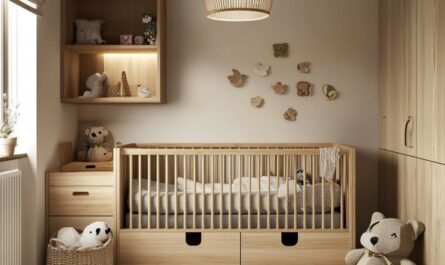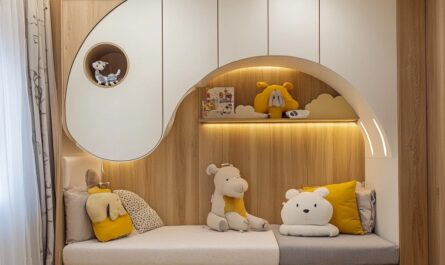The influence of color on the psycho-emotional state of a child
Colors play an important role in the development of a child, as they influence his mood and emotional state. Different shades can activate different senses—for example, red can stimulate activity and energy, while blue or green can be calming. It is important that the colors in the children’s room contribute to a comfortable atmosphere for sleep and relaxation, and also support development.
It must be taken into account that the perception of color depends on the age of the child. Babies and toddlers, for example, tend to perceive bright and rich colors, but as they age, their perception becomes more subtle. Therefore, it is important to choose colors that harmoniously affect the child’s psyche in accordance with his development.
Recommendations for a baby’s nursery
For a baby’s nursery, soft and delicate colors that do not overload the baby’s perception will be optimal. Pastel shades such as light blue, beige or lavender are great choices. These colors create a calming atmosphere, which is important for baby’s sleep and rest. They also contribute to a feeling of security and peace.
However, you should not use too bright or saturated shades, as they can cause overstimulation. It is best to limit yourself to a few soft shades that can be combined to create a harmonious and cozy atmosphere.
Colors for preschool children: activity and calm
Preschoolers are active explorers of the world and need stimulating and inspiring colors. A good choice would be colors such as orange, yellow, green. These shades promote the development of motor skills, creative thinking and social skills. However, it is important to maintain balance and alternate bright accents with neutral colors so as not to overwhelm the space.
On the other hand, for the relaxation and sleep areas it is better to use calm colors such as blue or light green. This will help create an atmosphere for relaxation, especially in the evening when the child needs to prepare for rest.
Choosing colors for a schoolchild’s children’s room
For schoolchildren, it is important that the colors in the room promote concentration and the learning process. Calm but expressive shades such as green, blue and gray are good choices. These colors support mental activity and help your child focus on tasks. Bright accents can be used for decoration, but the main palette should be calm.
It is also worth considering the preferences of the child, who at this age may already have his own favorite colors. Let him choose accents or decorative elements in the room to make him feel comfortable and cozy in his space. This will help develop a child’s sense of responsibility and respect for his personal space.
Teenage room: how to take into account preferences and personality development
When a child becomes a teenager, their color preferences can change dramatically. This is the time when teenagers begin to realize their individuality, and choosing colors in a room can be an important way of expressing themselves. Bright, bold colors such as red or purple may be ideal for this age as long as they don’t create undue stress in the room.
However, it is important to remember that teenagers still need a balance between bright and calm colors, especially in their sleeping and relaxing areas. More neutral shades such as gray or navy can be good options here to help you relax and focus on studying or relaxing. The main thing is to take into account the teenager’s opinion so that he feels that his space reflects his personality.
How to combine colors in the interior of a children’s room
When it comes to color combinations in a child’s room, it is important to consider a few key factors. The right combination of colors helps create a harmonious atmosphere that will both stimulate your baby and soothe him at the right time. The color palette should be balanced and support the child’s comfort, helping him develop, relax and learn.
- Start with a primary color: Choose one primary color that will dominate the room. It can be soft blue or neutral beige for babies, calm green for schoolchildren or rich blue for teenagers.
- Use accent colors: Add bright accents in the form of pillows, curtains, rugs or pictures. Vibrant hues such as orange, red or yellow can be used to create a dynamic area for play and creativity.
- Divide the space: Use colors to visually divide the room into different zones. For example, use calmer and neutral colors for the sleep area, and more active colors for the study or play area.
- Consider age-related changes: As your child ages, his or her preferences may change. Teens, for example, may want to change the accents in a room by adding brighter or darker shades that reflect their personality.
- Pay attention to the lighting: the light in the room greatly affects the perception of color. Warm light will enhance warm colors, while cool light will highlight cool colors. Keep this in mind when choosing colors and planning decor.
The combination of the right colors in the interior of a children’s room contributes not only to aesthetics, but also to functionality. It is important not only to use colors that your child likes, but also to create a space that supports his physical and emotional well-being. Harmony in colors helps create an atmosphere that will stimulate development, relaxation and study.
Questions and answers
Answer 1: For babies, it is better to use pastel and soft shades such as light blue, beige or lavender.
Answer 2: Bright colors such as orange, yellow and green are good for preschoolers and promote motor development and creative thinking.
Answer 3: For schoolchildren, it is better to choose calm shades such as blue, green and gray, which help them concentrate on their studies.
Answer 4: For teenagers, bright, saturated colors such as red or purple are suitable, but for the recreation area it is better to use neutral shades such as gray or navy blue.
Answer 5: In the interior of a children’s room, it is important to combine active and calm colors, taking into account the age and needs of the child, creating harmony between stimulation and relaxation.



